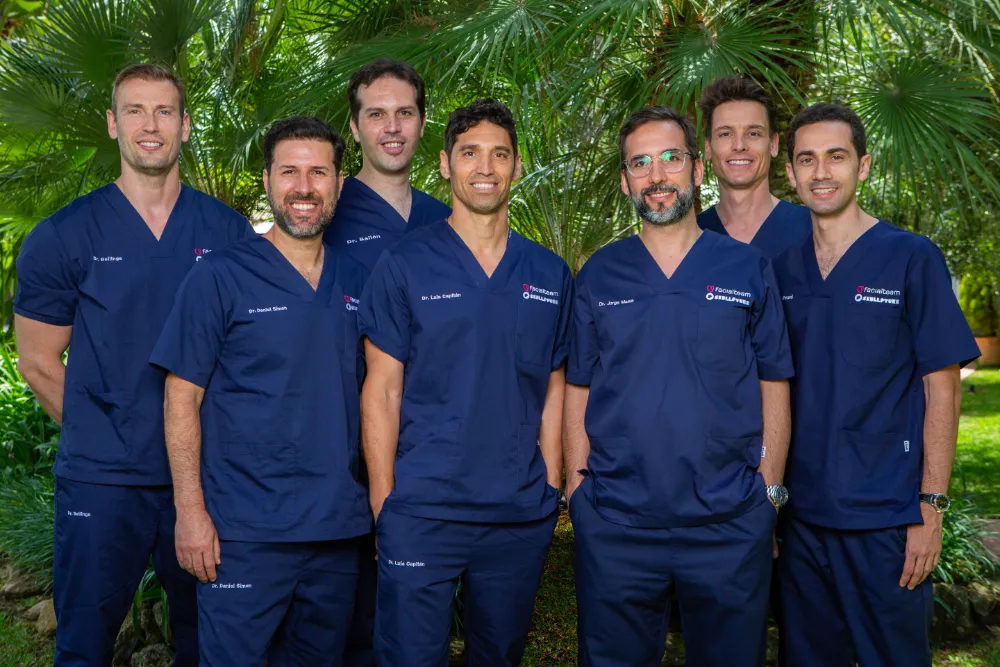How to Look More Feminine? A Complete M2F Procedures Guide 2024
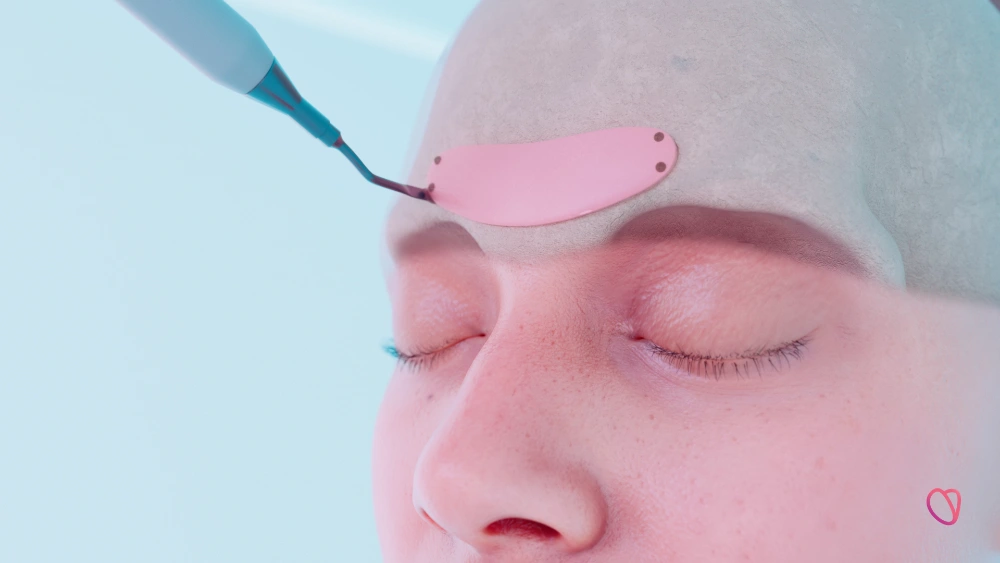
When people misgender you or make you feel uncomfortable during your transition journey, it is hard. You might be wondering how to avoid being misgendered. How can I feminize my appearance?
If you’re looking for ways to feel more comfortable in your own skin, I’m here to help! First, let’s be clear: surgical procedures are not always a necessary solution as there are many non-invasive options too.
However, here’s a guide on MtF procedures for those who are curious about the possibilities in 2024.
Facial Feminization Procedures to Look More Feminine in 2024
It’s common for people to make quick assumptions about someone’s gender based on their initial appearance. This can lead to trans women being misgendered unfortunately, when something doesn’t align with a person’s perception of gender.
While HRT can make significant changes in soft tissues, the features commonly associated with masculinity are mainly determined by bone structure, which remains unchanged by hormones. Facial Feminization Surgery, also known as Facial Gender Affirming Surgery, includes various procedures with the goal of adjusting these “masculine” bone structures to align with your true gender identity.
FFS is a highly personalized approach that should be evaluated for your unique case. Since there is a wide range of procedures, you may feel overwhelmed about figuring out what, if anything, is best for you. Surgery is not necessarily indicated for everyone, particularly if your gender identity is nonbinary or genderqueer.
Just remember, your surgical plan should be designed to meet your own individual needs and goals. This Complete M2F Procedures Guide will help to discern which options are out there. However, you should also seek and contrast various professional opinions and take time to weigh the advantages and disadvantages.
Forehead Feminization Surgery
As previously mentioned, it’s important to know that people often identify someone else’s gender identity within the first few seconds of meeting them, usually focusing on one of the thirds of the face. One area that can be shaped by testosterone is the forehead, as the brow bone tends to grow more prominently during puberty, leading to a more stereotypical “masculine” appearance.
Summer
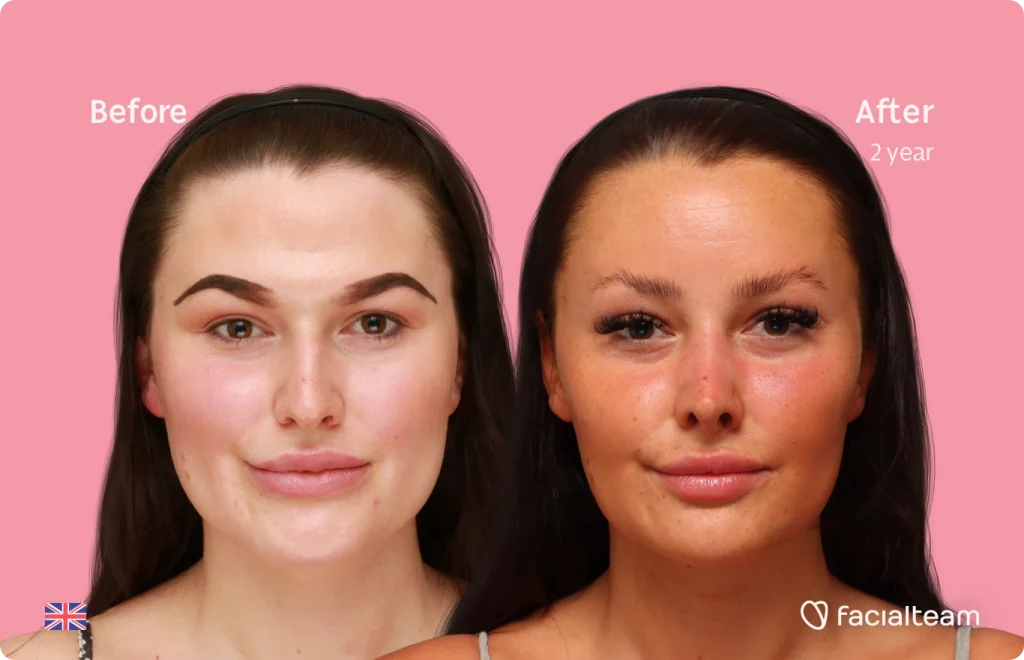
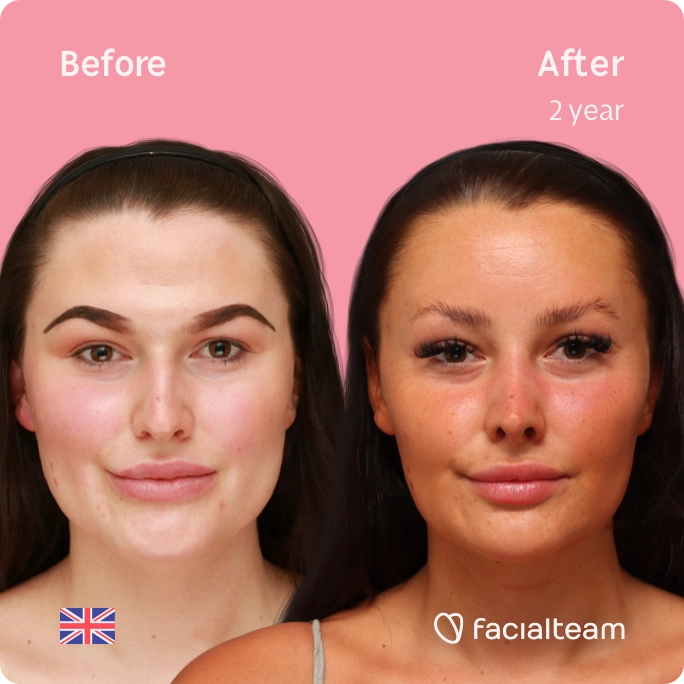
The brow ridge is often considered a distinct characteristic in today’s societies. In such stereotypes, male foreheads typically have more prominent features that cast shadows over the eyes, a trait often associated with masculinity.
In contrast, female foreheads are smoother, without forward-projecting brow bones.
The surgery consists of a small piece of the scalp being gently removed, allowing complete access to the forehead and orbital region. Then, removing the frontal sinus wall for separate sculpting and shaving while maintaining its functionality and integrity intact.
You can find further information on our procedure page.
Hairline Feminization Surgery
Just like your Forehead, your hairline plays an important role in the first third of the face.
The differences between masculine and feminine hairlines are important to understand, and they can have a significant impact on how we perceive gender.
Masculine hairlines are typically further back on the scalp, often resulting in a pronounced forehead and a distinctive M shape as the hairline recedes over time.
On the other hand, feminine hairlines tend to be closer to the eyes, and while it’s a misconception that women have shorter foreheads, they usually are more rounded, creating an oval shape, which is often associated with femininity.
Charlotte W

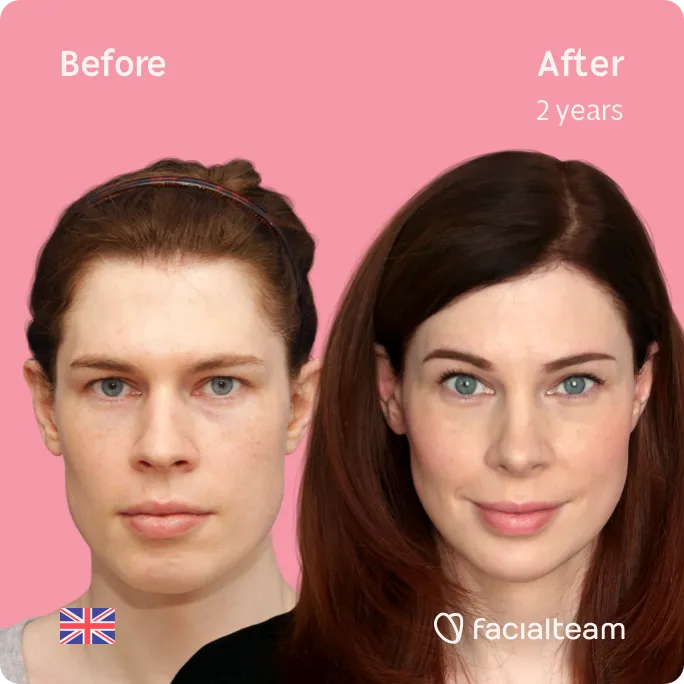
You can find further information on our procedure page.
Nose Feminization Surgery: Rhinoplasty
Now we move to the middle third of the face, as your nose can make a big difference in your overall Facial Feminization. A Feminizing Rhinoplasty is often combined with the forehead reconstruction, browbone reduction or a liplift for the best overall feminizing result.
Masculine noses tend to be larger, wider, and more rigid, with a sharp and prominent transition from the forehead to the nose, giving a distinctly male appearance. On the other hand, a more stereotypically “feminine” nose is generally smaller, narrower, and straighter.
Nowadays, Ultrasonic Rhinoplasties offer a big advantage by significantly reducing bleeding and swelling during and after surgery. Plus, to help speed up your recovery, Facialteam employs fibrin-rich plasma injections made from your own blood to promote faster healing.
Find further information on our procedure page!
Jaw and Chin Feminization Surgery
Now, we pass to the last third of the face, starting with the Jaw and Chin area.
Stereotypically “masculine” jaw angles are more squared with larger, well-defined corners, and greater volume/size.
The transition between the lower jaw and chin is therefore rounded to amplify a feminine look.
Simone
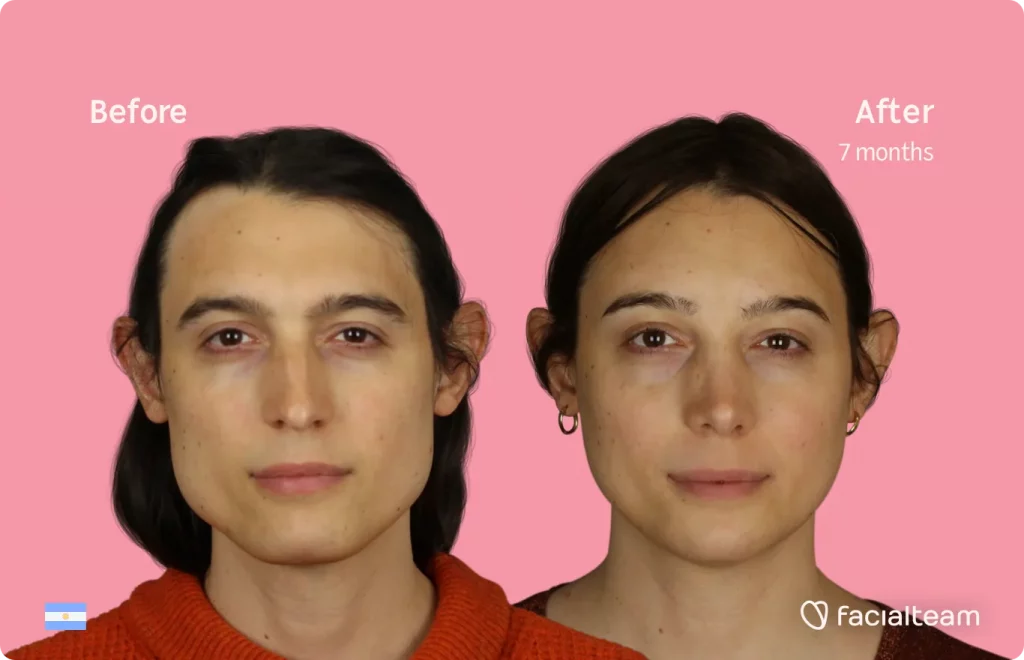

To minimize the masculinity, we cut the bone with Ultrasonic Technology, which makes the process safer and more predictable. Then, the bone fragments are removed and, using a high-speed tool, they smooth out the bone surface.
Learn more about our jaw and chin feminization surgery here!
Adam’s Apple Removal: Tracheal Shave
During male puberty, the larynx grows, which usually deepens the voice and also makes the Adam’s apple grow. This can happen to some cisgender women too, but it’s usually not so noticeable.
Negin
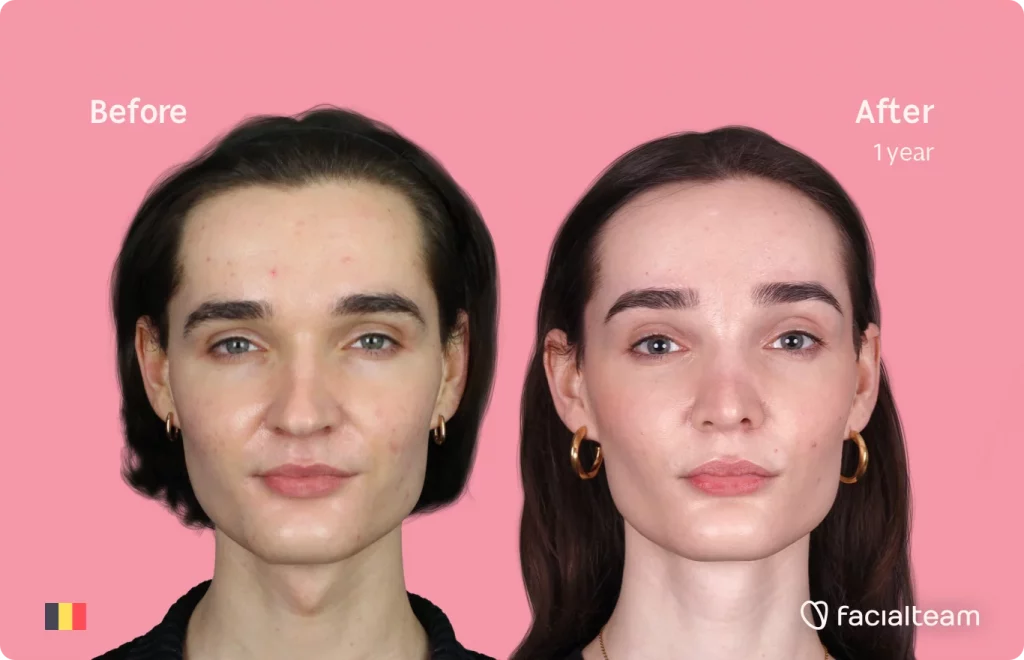
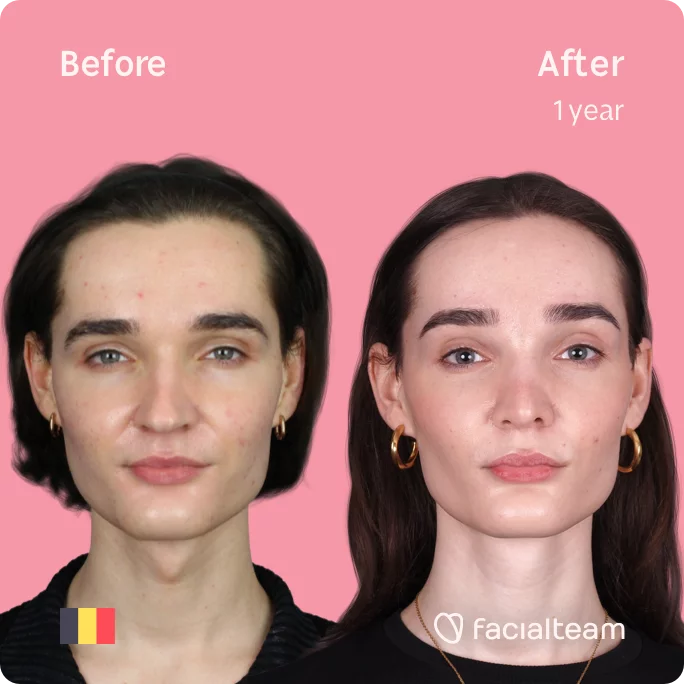
In order to “remove” the Adam’s Apple, your surgeon creates a small tunnel from a less visible crease near the top of the neck in order to reach this cartilage protuberance. Shaping may involve shaving, burring, or ultrasound depending on your case.
On our procedure page you may find more information.
Complementary Procedures to FFS
Lastly, there are other procedures for those who are seeking to enhance their look, Complementary Facial Soft Tissues Surgeries aim to refresh your appearance during or after FFS.
These procedures focus on the soft tissues, not the bones. They help balance your face, making sure everything looks proportionate and rejuvenated. This can address sagginess, aging, tiredness, or stress.
Even though these procedures are not usually tagged as FFS, they may highlight the effects of the “main” FFS procedures.
Ana
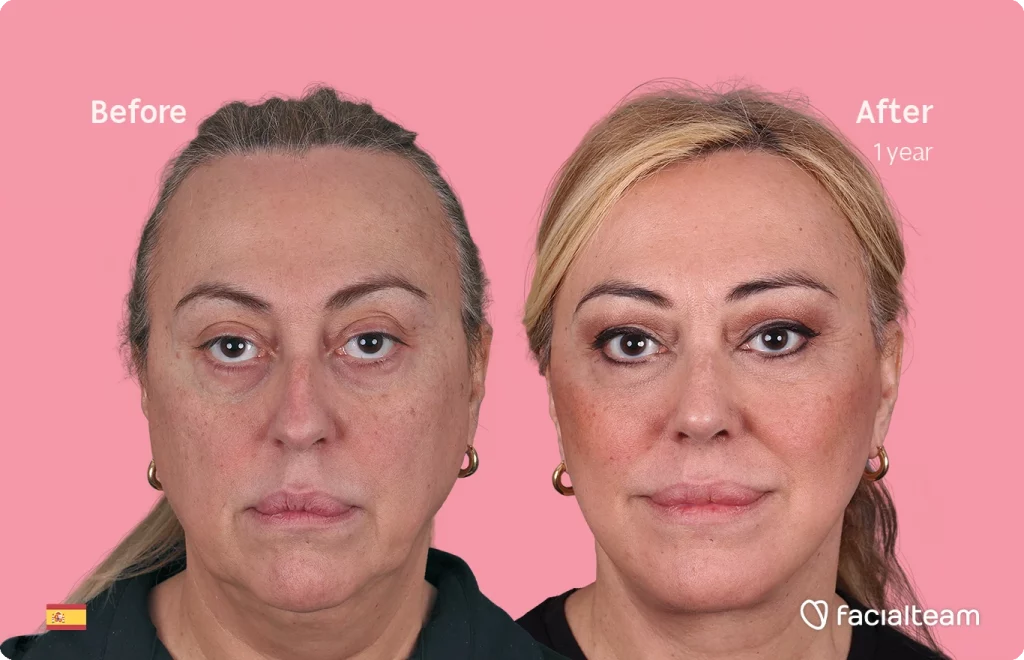
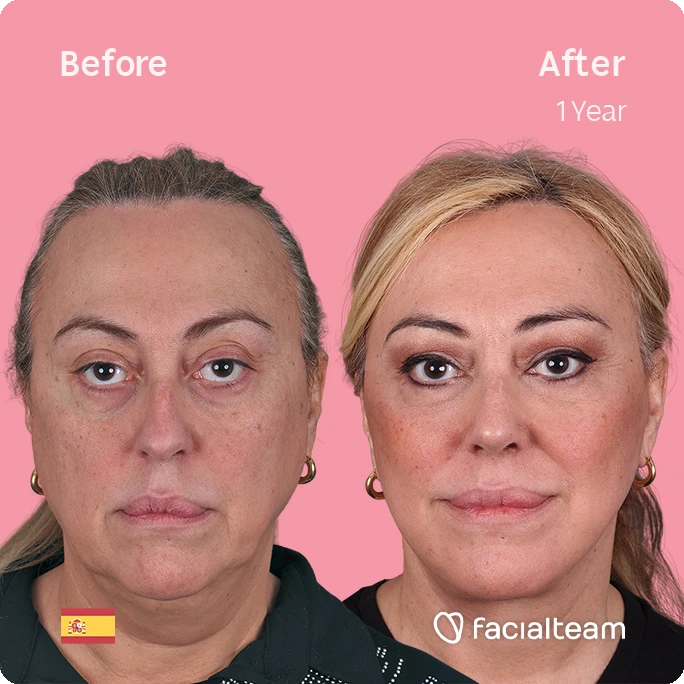
You may find more information about each soft tissue surgery on our complementary procedures page.
Voice Feminization Treatments in 2024
Sometimes, your voice can influence someone’s first impression of your gender identity. However, let’s remember, it’s just one tiny piece of the puzzle. Gender is way more complex than just how high or low your voice is. While a higher-pitched voice might meet society’s expectations of femininity, there are plenty of cisgender women with deeper voices.
With that being said, voice can be a significant factor in how people perceive gender, especially in phone calls or voice messages, where being visible might be limited.
If having a deeper voice is something that causes dysphoria or discomfort for you, there are various options to develop a voice that feels more aligned with your gender identity.
Vocal Therapy to Feminize my Voice
Having Voice therapy with a Vocal Coach specialized in voice feminization can be incredibly beneficial. They can work with you to develop techniques to adjust pitch, resonance, and speech patterns to better align with your gender identity.
Also, there are other factors that contribute to the perception of a “feminine” voice:
- The tone or color of “feminine” voices tend to have a more forward resonance, meaning they reverberate more in the front of the mouth or the nasal cavity rather than in the chest.
- Women’s voices often show more pitch variation, they move up and down in pitch more frequently during speech. This adds expressiveness and naturalness to the voice.
- Also, a stereotypical “feminine” voice normally uses different speech patterns compared to men. For example, women may use more intonation patterns, such as rising intonation at the end of sentences, and may speak at a faster rate than men.
I would highly recommend you reach out to a Professional Speech Therapist who can offer you a personalized routine of exercises and adjust to your unique case. We also have a YouTube playlist dedicated exclusively to Voice Training by the hands of professionals in the field, check it out!
Voice Feminization Surgery
Sometimes, Vocal Therapy might not give you the exact results you’re looking for. That’s when Voice Feminization Surgery might be considered. This surgery aims to change your voice pitch, resonance, and overall quality in order to sound more like what’s typically considered “feminine.”
It’s important to mention that Voice Feminization Surgery is more successful when Vocal Therapy is practiced before and afterward. Not only to recover your voice, but as previously mentioned, to train other gendered aspects you need to keep in mind.
There are various techniques to surgically “feminize” your voice:
- Cricothyroid Approximation: This procedure involves altering the tension and length of the vocal cords by bringing the cricoid cartilage closer to the thyroid cartilage through suturing.
- Wendler Glottoplasty: This method focuses on shortening the length of the vocal cords by suturing together the anterior vocal tissues, resulting in a higher pitch and potentially a more feminine voice quality.
- Laser-Assisted Voice Adjustment: This technique uses a specialized carbon dioxide laser to target and remove specific portions of the vocal cords. By precisely affecting these tissues, the vocal cords can get smaller and tighter, which can lead to an increase in pitch and a more feminine voice resonance.
- Laser Reduction Glottoplasty: In this surgical approach, a laser is used to remove tissue from the anterior part of the vocal cords. After that, the remaining portions of the vocal cords are sutured together to create increased tension. This procedure aims to reduce the size and mass of the vocal cords while also adjusting their configuration to achieve a higher pitch and a more feminine voice quality.
Voice Feminization Surgery, Voice Therapy and other surgeries: What’s the best way?
Choosing surgery or vocal therapy is a personal decision that depends on what feels right for you. I’d highly recommend talking with professionals who specialize in voice feminization to understand what your options are and to find the best plan.
Generally, it is recommended to leave voice surgery to the end of your medical transition, when you don’t anticipate needing more intubation for general anesthesia. This is because your vocal chords may become more susceptible to irritation unless small or even child-sized breathing tubes are employed during surgery. Also, this way your new voice is not affected by any changes in the thyroid cartilage after a tracheal shave, structures connected to the voice box.
Both voice feminization surgery and vocal therapy take time and effort to see results. Transitioning is a journey, so make sure to prioritize your health, well-being, and happiness along the way!
Body Feminization Surgery in 2024
Although we are body positive and body inclusive, we must mention the relation between gender identification and “feminine” body shapes. These perceptions are sculpted by societal standards and stereotypes that idealize skinny bodies with a small waist and larger hips, fuller breasts, narrow shoulders and of medium stature.
Regretfully, trends and fashion further reinforce these expectations.
Breast Augmentation
One of the most prominent features usually associated with a woman’s body is their breasts. Playing a crucial role in the biological function of lactation, this highlights their importance in female anatomy and motherhood.
In many cultures, breasts are also seen as symbols of fertility, motherhood, and beauty. This symbolism is deeply rooted in art, literature, and media.
There are various aspects to keep in mind when having a breast augmentation:
Types of Breast Filling and Breast Implant Shapes
There are different types of filling for your Breast Augmentation, each one with its unique advantages and disadvantages:
- Saline Implants are filled with sterile saltwater. They are adjustable during surgery and require smaller incisions. If they break, your body safely absorbs the saline. However, they may feel less natural and tend to wrinkle.
- Silicone Implants are filled with silicone gel, which feels more like natural breast tissue and is less likely to wave. They require larger incisions and regular checkouts to ensure they haven’t broken.
- Structured Saline Implants combine the benefits of both saline and silicone. They have an internal structure that helps them feel more natural while maintaining the safety of saline. However, these are more recent and might not be available everywhere.
The shape of these are also very important since it will affect the comfort and naturality of the final result:
- Round implants offer a beautiful, symmetrical fullness that fills the upper breast area evenly, offering a versatile option for various projection levels. Their shape makes them less likely to rotate, ensuring stability.
- Anatomic implants, shaped like a teardrop, offer an elegant, natural look that closely looks like a natural breast. They’re perfect for patients with minimal breast tissue or those seeking a subtle, lifelike enhancement.
- Ergonomic implants have the ability to shape themselves to your body’s movements. When standing, they get the teardrop or anatomical shape, mirroring the natural behavior of breast tissue. However, when lying down, they seamlessly flatten out to adopt a rounder appearance.
This characteristic provides an incredibly natural appearance in any position, and their stability minimizes the risk of rotation, setting them apart from traditional teardrop implants and offering peace of mind to patients.
Another technique for Breast Augmentation is Fat Grafting, where fat is taken from other parts of your body, like your abdomen or thighs, and injected into your breasts. This method uses your own tissue, eliminating the risk of implant rupture and offering a natural look and feel. The downside is that the size increase is limited, and you might need multiple sessions as some of the fat can be reabsorbed by your body over time.
For those looking for a combination approach, Composite Breast Augmentation or Hybrid Augmentation uses both implants and fat grafting. This can address specific contour issues and provide a more natural appearance. However, it’s a more complex procedure with higher costs and a longer recovery period.
Implant Placements for Breast Augmentation
Another important aspect to consider is where the implants will be placed in relation to your unique case, each option has its own unique benefits and potential considerations.
Subglandular Placement places the implants above the pectoral muscle but beneath the breast tissue. This approach often offers a quicker recovery time and a less complex surgical procedure. However, it’s important to think about the potential risks, such as a slightly higher chance of capsular contracture, which could impact your comfort and the appearance of your breasts over time, especially if you have thinner breast tissue.
On the other hand, Submuscular Placement places the implants under the pectoral muscle, typically resulting in a more natural look and feel, as the muscle provides additional coverage over the implants. The down part of this technique is a longer recovery period and temporary discomfort as your muscles adjust to the new implants.
Deciding Subglandular or Submuscular placement is completely individual, and should be taken in collaboration with a professional plastic surgeon who truly listens to your concerns and desires.
Incision Techniques for Breast Augmentation
The most common incision approach is the Inframammary Incision, where the surgeon makes a discreet cut under the breast, following its natural crease. This technique offers excellent access for precise implant placement while minimizing visible scarring. However, it’s important to be aware that the scar may still be noticeable in certain positions or clothing, which can be a concern for some people.
Another option is the Periareolar Incision, where the surgeon makes a subtle incision around the lower edge of the areola. This approach is preferred by many since the resulting scars blend with the natural pigmentation of the areola, making them less noticeable. However, there is a slight risk of changes in nipple sensation, which should be carefully considered.
For those seeking to avoid scars on the breast altogether, the Transaxillary Incision may be the best option. This involves making an incision in the armpit, leaving no visible marks on the breast itself. While this approach offers the benefit of minimal scarring, it’s important to acknowledge that surgery can be more challenging due to limited visibility.
Hip and Buttock Augmentation
The perception of wider hips as a key aspect of femininity has changed significantly over time and varies between cultures.
Today, in Western society, there’s a clear movement towards celebrating diverse body types, including those with wider hips. This change reflects a shift in beauty standards, moving away from the ultra-thin ideal towards a more inclusive appreciation of all body shapes and sizes.
This is also influenced by celebrities like the Kardashians, Nicky Minaj, Cardi B, Beyonce…
Here, we’ll explore some of the most popular and effective procedures, each with its own unique approach and benefits.
The Brazilian Butt Lift, or BBL, is one of the most sought-after procedures for enhancing the shape and size of the buttocks. This procedure involves liposuction to remove fat from areas such as the abdomen or thighs. The extracted fat is then purified and injected into the buttocks and hips. This dual benefit of body contouring and buttock enhancement creates a fuller, more contoured look.
If you don’t have enough excess fat for a BBL, Buttock Implants might be the right choice for you. These silicone implants are designed to augment the size and shape of your buttocks. Just like with Breast Augmentation, they can be placed either above or below the gluteal muscles, depending on your anatomy and desired outcome.
Nowadays we see more people who desire a more exaggerated look. More dramatic results are obtained by merging the benefits of fat transfer with implants.
For a less invasive option, Injectable fillers, just as for the face, may also be employed for the hips and buttocks. While this method may requires multiple sessions and maintenance, it offers a non-surgical alternative. Please avoid non-medical or silicone fillers as these are unsafe and known to cause serious problems that may leave permanent damage.
Waist Reduction Surgery
Though a small waist is not necessarily indicative of a more “feminine” body shape, it may help to enhance the hourglass figure that you seek with a Hip Augmentation.
Surgical options for reducing the size of your rib cage do exist, but they are more risky procedures that require careful consideration and consultation with professionals in the field.
One option is Rib Removal Surgery, which involves the removal of one or more ribs to decrease the circumference of the rib cage. While this may seem like a clear solution, it’s important to recognize the potential risks and complications associated with such a procedure, given it does not modify the width of the remaining rib cage.
It carries risks such as damage to internal organs, chronic pain, and issues with the structural integrity of the chest. Recovery can be a long and challenging process, both physically and emotionally. As suggested, more extensive thoracic surgery may modify other parts of the rib cage, but this also comes with significant risks, including infections and scarring.
Perhaps less invasive option is an emerging technique called Rib Molding. This was designed to help those who have a wide rib cage or have undergone multiple procedures without achieving their desired waistline. The surgery is performed under general anesthesia and during the procedure, the surgeon makes two small incisions in the back through which an instrument is inserted to partially fracture the ribs without removal, which are gently reshaped to allow for a narrower waist.
The degree of waist reduction can range from 4 to 15 centimeters, depending on the individual case. A critical part of achieving the best results from rib molding is the disciplined use of a corset after surgery, which helps to maintain the new shape.
Gender Reassignment Surgery
Better known as Genital Gender Confirmation Surgery or Gender Affirming Surgery, this type of intervention was formerly and improperly referred to as Sex Reassignment Surgery (SRS). Scientific study proves it to be an important life-affirming procedure for many transgender people.
The path to GRS is deeply personal, involving multiple long-term steps which are different for each person, depending on their personal needs and circumstances. The impact of this surgery on trans women’s lives is typically positive and profound. It may represent the culmination of a long journey toward self-acceptance. Post-surgery, reports increasingly find that the majority of trans women experience a significant reduction in gender dysphoria as well as an increase in overall happiness and well-being.
Studies continue to show that GRS can enhance their confidence, allowing them to engage more fully in social, professional, and personal relationships. However, as with all surgery, it does not come without potential incidence, consequences, risks and complications that need to be weighed against the benefits.
The incidence of regret is clinically small, but this possibility is the reason why there is an extended process of preparation and readiness for what is essentially an irreversible procedure.
What is Gender Reassignment Surgery?
Gender Reassignment Surgery for trans women mainly involves the reconstruction of male genitalia into female genitalia. This complex process may include several different surgical techniques, each tailored to the individual’s needs and goals. Specialists in gynecology, urology, plastic surgery and more are required for these complex procedures.
Different Techniques in Gender Reassignment Surgery
- Penile Inversion Vaginoplasty is the most commonly selected technique, where the penile skin is inverted to create the vaginal canal. This method generally provides good aesthetic and functional results. However, the depth of the neovagina can be limited if there is insufficient penile and scrotal skin.
- Penile-Peritoneal Vaginoplasty involves using the peritoneal lining, the tissue from the abdominal cavity, to create the vaginal canal. This technique can be used alone or in combination with Penile Inversion. It allows for greater vaginal depth compared to penile inversion alone, and the peritoneal tissue is self-lubricating, which can be beneficial for sexual function. However, the procedure is more complex and carries additional risks of abdominal complications.
- In Sigmoid Colon Vaginoplasty, a segment of the sigmoid colon is used to construct the vagina. This method provides significant depth and natural lubrication due to the mucosal lining of the colon segment, making it an excellent option when there is insufficient penile and scrotal skin. Nonetheless, it involves major abdominal surgery, increasing the risk of complications, and the colon segment may produce excess discharge that involves additional management.
- Non-Penile Skin Grafts use skin from other parts of the body, such as the thigh, to line the vaginal canal. This method is useful for patients with insufficient penile and scrotal skin. However, the skin grafts might not match the sensitivity and elasticity of genital tissue, and there is a potential for graft rejection or other complications.
- A Labiaplasty and Clitoroplasty aims to reconstruct the external appearance of feminine genitals, with or without a vaginal cavity. There are techniques developed aiming to create a realistic aesthetic that also retains sensation to different degrees.
Certainly, for GRS, there are alternatives to Vaginoplasty, particularly for individuals who may not desire or be eligible for genital reconstruction.
In order to restrict the production of testosterone, some opt for an Orchiectomy, which is the surgical removal of the testicles. Compared to other surgical interventions, orchiectomy boasts low complication rates, rendering it an attractive option for individuals seeking gender-affirming changes. However, you must remember to plan the future of your fertility in advance as this procedure eliminates sperm production completely.
Selecting the appropriate techniques and order of events involves careful consideration of various factors, including the patient’s anatomical conditions, surgical goals, and overall health. A thorough orientation with a multidisciplinary team of health professionals specialized in gender affirmation is crucial to determine the most suitable approach for each individual.
Do I need surgery to gain passing privilege?
In short, not necessarily.
Getting surgery is a very personal decision and not all transgender individuals choose to undergo surgical procedures as part of their transition. Nowadays, there are plenty of gender affirming products and services, from skincare to prosthetics to non-invasive cosmetic medicine which attend to secondary characteristics such as facial or body hair, for example.
Passing privilege as a woman can mean different things depending on cultural norms, social constructs of your generation, ethnic makeup, etc. It’s important to remember that being a woman is about more than just physical appearance—it encompasses identity, expression, and a multitude of other factors.
If you’re considering surgery, it’s essential to weigh the potential risks and benefits and take time in order to make decisions that align with your own desires and needs, rather than solely focusing on societal expectations or norms. Speaking with a range of trans healthcare experts and a therapist who specializes in gender identity, in time, will lead you toward informed decisions about your transition while prioritizing your own well-being and happiness.
May the journey begin.
Lots of Love, Vicky <3
Book Your Consultation
Speak with a highly experienced FFS surgeon who, after a careful revision of your facial features, will recommend which procedures are right for you. A consultation with our team will help clarify any questions or doubts you may have.




